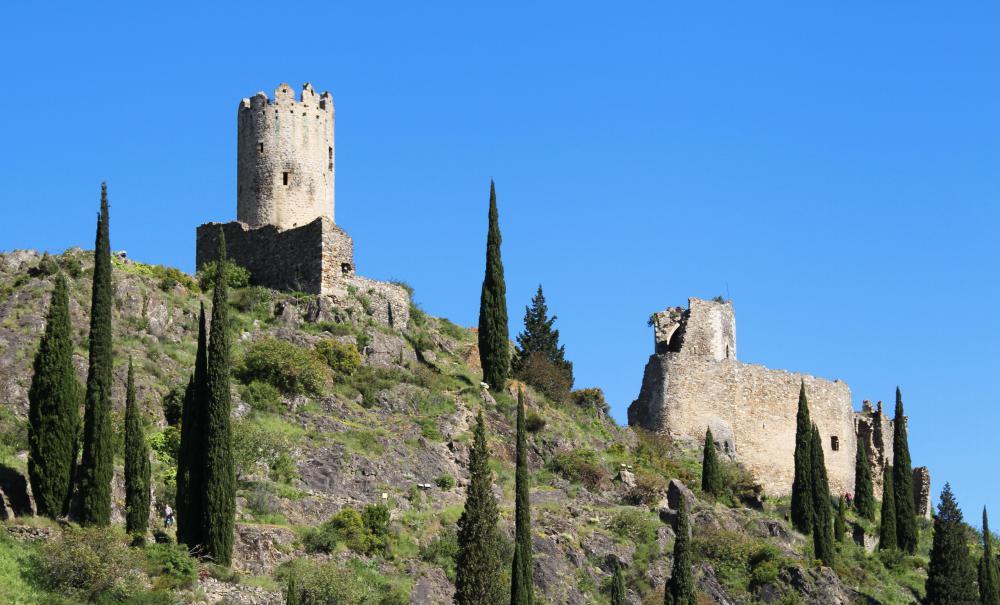At WiseGEEK, we're committed to delivering accurate, trustworthy information. Our expert-authored content is rigorously fact-checked and sourced from credible authorities. Discover how we uphold the highest standards in providing you with reliable knowledge.
What Should I Know About Spain?
Spain is a large country in Western Europe. It covers 195,400 square miles (506,000 sq. km), making it about twice the size of the state of Oregon, and larger than the state of California. It shares borders with Andorra, France, Gibraltar, Morocco, and Portugal, and has coastline along the Atlantic Ocean, the Cantabrian Sea, and the Mediterranean.
The ancestors of modern humans first arrived in Spain roughly a million years ago, and humans began settling the area about 35,000 years ago. The Phoenicians first began establishing cities and trading posts in the area in the 11th century BCE, and the Greeks arrived soon after, in the ninth century BCE. The Carthaginians supplanted many of the Greek outposts in the sixth century BCE, as part of their developing Mediterranean empire.

Rome conquered the country in the second century BCE, taking it from the Carthaginians in the Second Punic War. The Romans developed it like none before had done, adding massive infrastructure, expanding the economy, and turning it into a powerful center of trade in the Mediterranean. By the first century Spain had achieved great importance to Rome, and the Iberian people had all achieved Roman citizenship.

Christianity emerged in the first century, and by the fourth century had dominated most of the region. When the Western Roman Empire had come to its final collapse in the 5th century, Spain was conquered by the Visigoths. In the 8th century Islamic Arabs from North Africa crossed the Strait of Gibraltar and conquered the country for the Umayyad Caliphate. The Arabs retained control for the next centuries, reconquering Christian kingdoms within the Emirate when they became too powerful. In the early 13th century a powerful confederation of Christian kingdoms drove out the Arab powers and re-established their own kingdoms.

In the late 15th century the two kingdoms of Castille and Aragon were united when their monarchs wed, creating the unified Kingdom of Spain. Queen Isabella then went on to further consolidate the power of the new kingdom, arranging marriages for each of her five children to bring the kingdom close to the major powers in Europe, including the Holy Roman Empire, the Hapsburg Dynasty, Portugal, and England.

Spain then went on to expand its kingdom into a global empire, claiming lands throughout the New World, and establishing trade routes with a number of powerful nations. In the 15th century a Hapsburg, Charles I, who was also known as Charles V, took the throne. Under this Holy Roman Emperor, and with the massive wealth coming in from its colonies in the new world, the country would go on to conquer parts of North Africa, and expand its territories throughout the rest of the world, creating a truly mighty empire.

When the Habsburgs died out in Spain in the 18th century, a battle for the crown began between the major European powers. Ultimately France was victorious, and Philip V of the Bourbon Dynasty took power. In the late 18th century Spain began to lose its grip on its empire, ultimately culminating in the loss of much of its New World holdings to independence in the early 19th century.
Much of the rest of the Spanish history in the 19th century was characterized by civil war in an attempt to force the government to liberalize, eventually forcing the king to flee, and in 1873 the first Spanish Republic was formed. In 1874 the monarchy was restored under King Alfonso XII, a Bourbon. The remainder of the Empire was broken up in the next few decades and retained only three colonies, all in Africa.
In 1931 a second Republic was declared, and a number of forces began vying for control within the Republic, including Anarchist, Communist, and Fascist factions. A Civil War broke out in 1936, and with the assistance of Nazi Germany and Fascist Italy, the Fascists ultimately prevailed, with Franco as their leader.
Franco continued to rule the country until he died in 1975, at which time leadership was again passed to a Bourbon, King Juan Carlos. The nation immediately began to move towards becoming a democratic state, and reached this goal in 1982
Spain is a beautiful country with millennia of cultural heritage expressed in the architecture, people, and landscape. It is one of the premiere tourist destinations in Europe. Major cities like Barcelona and Madrid offer amazing food, beautiful architecture, and a depth of culture that could take a lifetime to truly experience. San Sebastian offers a more upper-class getaway for those with the money. And castles and fortresses such as Castillo de Santa Barbara or Alhambra are great for lovers of majestic architecture.
Flights arrive daily in Spain from every major hub in the world, and it is also accessible by bus. Boat travel is available from both Morocco and the United Kingdom.
AS FEATURED ON:
AS FEATURED ON:















Discussion Comments
Has anyone traveled to spain and has tips/advice for travelers? i'm going to Barcelona, Sevilla, and then Tarifa to catch a ferry to Morocco. thanks!
Post your comments